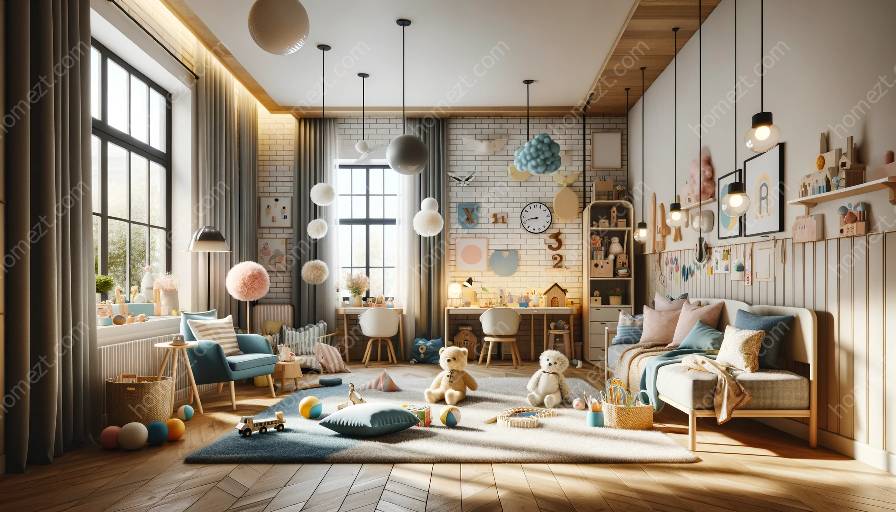When it comes to children's room design, addressing issues of privacy and personal space for multiple children sharing a room can be a challenge. This article explores creative and practical solutions that are compatible with interior design and styling principles.
The Importance of Privacy and Personal Space for Children
Privacy and personal space are essential for children's well-being and development. They need a sense of ownership and control over their environment, especially when sharing a room with siblings. A well-designed children's room should provide opportunities for both individual privacy and shared experiences.
Considerations for Multiple Children Sharing a Room
When designing a room for multiple children, it's important to consider the following factors:
- Age and Gender: Take into account the ages and genders of the children sharing the room. Different age groups may have different needs and preferences, and privacy concerns may vary.
- Functional Layout: Design the room layout to accommodate multiple beds, storage solutions, study areas, and play spaces. Each child should have their designated area within the room.
- Personalization: Allow each child to personalize their space with their favorite colors, decorations, and accessories. This helps create a sense of ownership and individuality.
- Storage Solutions: Implement effective storage solutions to keep personal belongings organized and separate from siblings' items. This promotes a sense of personal space and reduces clutter.
Design Solutions for Privacy and Personal Space
Now, let's explore specific design solutions that can address the challenges of privacy and personal space for multiple children sharing a room:
1. Bunk Beds with Curtains
Bunk beds are a practical space-saving solution for shared rooms. Adding curtains to each bunk creates individualized sleeping and private areas. Children can have their own space when needed, and also enjoy shared moments when the curtains are open.
2. Room Dividers
Consider using room dividers to visually and physically separate different areas of the room. This can provide a sense of division and privacy without the need for separate rooms.
3. Personalized Storage Units
Install personalized storage units for each child, such as labeled bins or shelves. This allows children to keep their belongings organized and separate from their siblings' items, promoting a sense of personal space within the shared room.
4. Designated Study and Play Areas
Create designated study and play areas within the room to give each child their own space for activities. This helps in establishing boundaries and personal territory.
5. Customized Wall Murals or Partitions
Consider incorporating customized wall murals or partitions to visually divide the room and provide each child with their own designated area. This can be a fun and creative way to define personal spaces.
Interior Design and Styling Tips
Integrating these privacy and personal space solutions into the overall interior design and styling is crucial for creating a harmonious and functional children's room. Here are some tips:
- Color Harmony: Use a consistent color palette to tie the individualized spaces together while allowing each area to have its own unique identity.
- Flexible Furniture: Incorporate modular and multifunctional furniture that can adapt to the changing needs of growing children.
- Comfort and Coziness: Focus on creating a comfortable and cozy atmosphere that encourages both individual relaxation and communal activities.
- Child-Friendly Materials: Choose durable and easy-to-clean materials that are suitable for children's everyday use and play.
- Personalized Décor: Encourage the children to participate in decorating their spaces, fostering a sense of ownership and creativity.
Conclusion
Designing a children's room that addresses privacy and personal space for multiple children sharing a room requires thoughtful planning and creative solutions. By considering the unique needs of each child and integrating practical design elements, a harmonious and functional shared room can be achieved. With the right balance of privacy and shared experiences, children can thrive in their personal spaces within a shared environment.


























